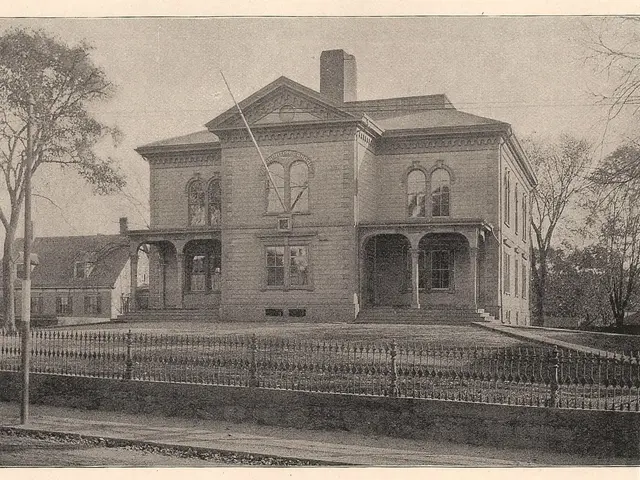Home Lighting Layout: Mastering the Art of Illumination in Your Residence
In the realm of home improvement, lighting design often takes a backseat to more noticeable changes. However, a well-planned lighting scheme can significantly enhance the ambiance and functionality of your living spaces. Here's a comprehensive guide to help you navigate the world of lighting design.
For low ceilings, uplighting is a highly effective technique to wash light off the ceiling and back down into the space. This method creates a warm and inviting atmosphere, perfect for cosy corners.
Dimmers are versatile tools in lighting design. They allow you to control the brightness of your lights and can be integrated with smart lighting systems to set different lighting scenes or schedules. This feature is particularly useful for adapting lighting to various times of day and moods.
When it comes to lighting design, planning is key. Mark permanent fixtures, such as windows and doors, on a room plan and visualize where each light source will be placed. This will help ensure that your lighting design is both practical and aesthetically pleasing.
Light switches should be conveniently placed, especially around doorways and at the top and bottom of stairs. This makes it easy to turn lights on and off, enhancing the overall user experience.
Accent or mood lighting is used to highlight objects or architectural features, adding a touch of elegance to your space. It's recommended to have a minimum of four light sources per room, with a mix of ambient, task, and accent or mood lighting.
Ambient lighting provides overall illumination, such as ceiling lighting. Task lighting, on the other hand, offers extra, targeted illumination for everyday activities like reading, cooking, and working. The positioning of each light is crucial to avoid dark corners, reduce glare, and provide adequate illumination without casting shadows.
The lighting design process involves considering both practical and emotional aspects. A biodynamic (or human centric) lighting scheme, for example, mimics natural cycles of light to create a more comfortable and productive environment. These smart lighting systems use gradually changing color light to wind down or invigorate as required.
When choosing the fittings for bathroom lighting, it's important to familiarize yourself with IP Ratings to ensure the safety of the lights in the room. Similarly, when choosing the lights for a room, consider the style and quality of the lights to complement the overall decor and not disrupt the harmony of the space.
Outdoor lighting can help make the most of outdoor spaces, enhance the curb appeal of a property, and improve safety. Good lighting design is about creating a 'layered' lighting scheme, which includes ambient, task, and accent or mood lighting.
In the modern world, energy efficiency is a crucial consideration. Low-energy light sources are now a requirement of building regulations for new homes, with 75% of the lights in a new home needing to be energy efficient.
It's a good idea to have more than one lighting circuit in a house. Operating each type or 'level' of lighting separately provides flexibility, allowing you to create the perfect lighting ambiance for any occasion.
Remember, planning a lighting design in advance is crucial. Making changes after the wiring is in place can be time-consuming and expensive. For expert advice, consider consulting "die Lichtexperten" (the light experts).
In conclusion, lighting design is a crucial element of home improvement that can greatly enhance the ambiance and functionality of your living spaces. By following these guidelines, you can create a lighting scheme that not only serves its practical purpose but also elevates the aesthetic appeal of your home.
Read also:
- Peptide YY (PYY): Exploring its Role in Appetite Suppression, Intestinal Health, and Cognitive Links
- Toddler Health: Rotavirus Signs, Origins, and Potential Complications
- Digestive issues and heart discomfort: Root causes and associated health conditions
- House Infernos: Deadly Hazards Surpassing the Flames








